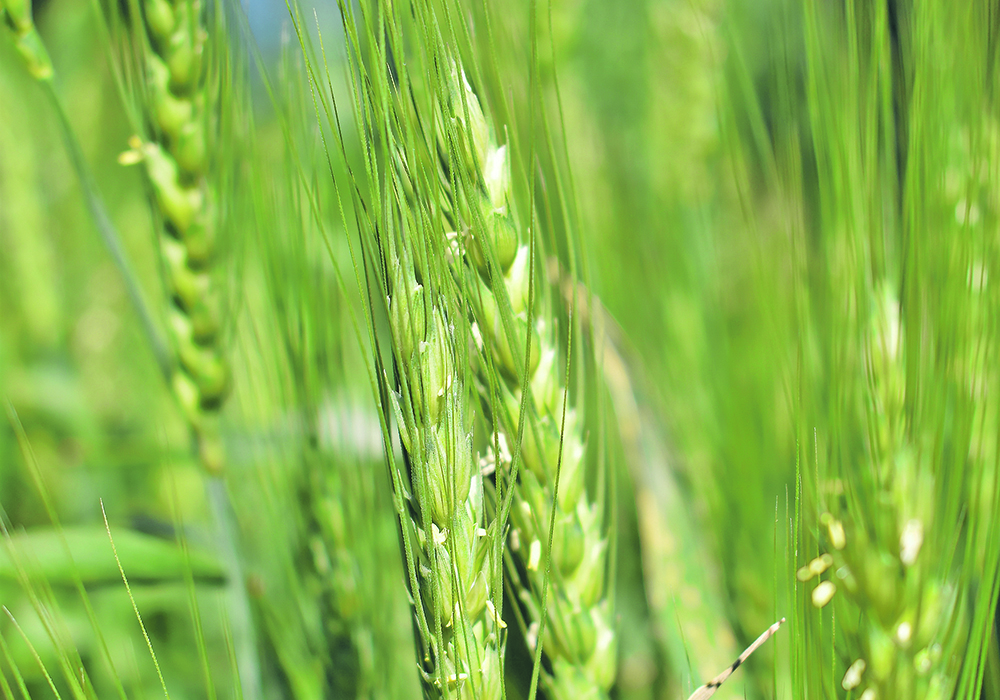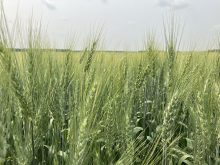Wheat is one of the oldest and most important cereals and is grown on more land area worldwide than any other food crop, supplying one fifth of the calories consumed by the global population.
Yet wheat suffers major yield losses due to attacks by pests and pathogens.
In 2010 the wheat genome was decoded, and that opened new opportunities to investigate how wheat protects itself when attacked by disease-causing microbes.
Read Also

Stacking Canada up on gene editing livestock
Canada may want to gauge how Argentina and other countries have approached gene editing in livestock and what that has meant for local innovation.
Now, researchers at the John Innes Centre in the United Kingdom have discovered six biosynthetic gene clusters in the wheat genome that switch on when the plant is attacked.
“When we searched the literature, we realized there was surprisingly little known about chemical defences in wheat or what the specialized molecules are that wheat produces to protect itself from pests and pathogens,” said Guy Polturak, a postdoctoral scientist.
Polturak worked with professor Anne Osbourn, a group leader at the John Innes Centre.
“From knowing little about wheat defense compounds, we have now discovered six previously unknown pathways for biosynthesis of defense compounds in wheat, including entirely new chemicals that haven’t been reported before,” said Osbourn.
The research coincided with the availability of a fully assembled wheat genome, which made a big difference in their approach to studying the genes and enzymes responsible for production of defence compounds. The team identified the compounds and biosynthetic pathways in bread wheat.
The detached leaves of greenhouse-grown plants were inoculated with the powdery mildew fungus and with elicitors. The infections from the fungal pathogens and microbial molecules resulted in the gene clusters inducing a quick response to infection, which suggested that the clusters had a broad-spectrum role in chemical defence against biotic stress.
“It was anticipated that wheat would, in fact, produce various defence compounds, and there would therefore be genes that are involved,” said Polturak. “We specifically looked for genes that are found in gene clusters, which means they are co-localized in specific locations on the genome. We found six clusters that encode various types of molecules. It’s likely that there will be other defence molecules produced in wheat, in addition to the ones that we found. These would either be similarly encoded by sets of clustered genes, or otherwise by genes that are randomly dispersed in the wheat genome.”
To discover what chemicals are produced by the clusters, the scientists isolated the genes of interest and introduced them into Nicotiana benthamiana, an Australian tobacco species.
They found that the clusters encoded a set of molecules including triterpenes, diterpenes and flavonoids, as well as a previously unknown molecule that was named ellarinacin. But exactly how these compounds protect wheat against threats is still a work in progress.
“It’s early to say how the different compounds we found contribute to protection against different diseases and pathogens,” he said. “In many cases, such defence compounds have broad-spectrum activity against various types of pathogens, for example protecting from both pathogenic bacteria and fungi. It’s plausible this will be the case here, but more investigation will be needed to answer these questions.”
He said they found that the genes responsible for production of chemically unrelated compounds are highly induced when a wheat plant is infected with various types of pathogens, suggesting a broad-spectrum defensive role. In addition, the gene clusters appear to be controlled by a limited number of “master regulator genes” responsible for switching genes on or off, depending on the circumstances. The clusters work together as a network and possibly form part of a wider network of genes involved in the defence response.
Most of the work was done on a landrace wheat variety called Chinese Spring for which a genome was assembled. However, it is not yet known how prevalent these genes and their products are in commercial wheat varieties.
Going forward, the team plans to focus on understanding the biochemistry of the metabolic pathways encoded by the gene clusters. They plan to clarify the molecules the clusters are producing, the role of each of those molecules in its contribution to wheat’s defence abilities and against which kinds of pathogens.
The work is expected to clarify the regulatory network governing these chemical pathways and lead to greater contributions to wheat breeding.
The research was published in the journal Proceedings of the National Academy of Sciences.















